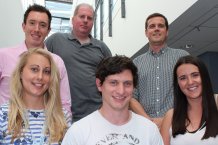Articles

Image courtesy of BBSRC
Worms in space: The Molecular Muscle Experiment
Thousands of worms are being flown to the International Space Station later this year for scientists to understand more about spaceflight-induced muscle loss - the first UK experiment to take place on the International Space Station.
A team of scientists from Exeter, Nottingham and Lancaster Universities involved in this project hope to discover more about muscle loss in space, which in turn could lead to developing effective therapies and new treatments for muscular dystrophies.
The research could also help boost our understanding about ageing muscle loss and even help improve treatments for diabetes. It’s part of an important project and the first UK experiment to take place on the International Space Station.
Sam Gyimah, Science Minister said: “It’s not every day that you hear of the potential health benefits of sending worms into space, but this crucial project which is also the first of its kind, could lead to better treatment for muscular conditions for people on Earth as well as improving the wellbeing of our astronauts.
“Along with our commitment through the modern Industrial Strategy to support our space sector to go from strength to strength, our world-leading research sector is consistently pushing the boundaries of existing knowledge for the benefit of all.”
Spaceflight is an extreme environment that causes many negative health changes to the body and astronauts can lose up to 40 per cent of their muscle after 6 months in space. These changes are regarded as an excellent model for the aging process in the body, and scientists are able to use the knowledge gained from studying changes in astronauts to better understand the aging human body.
The microscopic worms being used in the experiment, known as C. elegans, share many of the essential biological characteristics as humans and are affected by biological changes in space, including alterations to muscle and the ability to use energy.
Tim Etheridge, Senior Lecturer at the University of Exeter, said; “Worms are, perhaps surprisingly, a very good model for human muscle maintenance. At the molecular level, both structurally and metabolically they are highly similar to that of humans and from a space flight specific perspective – they provide a lot of practical advantages. They are very small, quick to grow, cheap and easy to maintain. It makes them good to work with”.
“The Molecular Muscle Experiment aims to understand the causes of neuromuscular decline in space”, says Nate Szewczyk, Professor of Space Biology at the University of Nottingham. “This research will help us establish the precise molecules that cause muscle problems during spaceflight and enable us to test the effectiveness of novel therapies for preventing the muscle decline associated with spaceflight”.
Preparations to send worms into space have been taking place. The worms are in liquid bacterial feed and are sealed in a special gas permeable plastic bag. The plastic bags are then housed in a special incubator. The worms reproduce in space and after growing to adults, in around 6.5 days, they will be frozen until returning to Earth.
The Molecular Muscle Experiment is the first UK-led experiment to take place on the International Space Station. UK scientists are able to carry out this research thanks to the UK Space Agency’s subscriptions to the European Space Agency’s exploration programme, which contributes to the costs of the International Space Station, which the UK joined in 2012.
Tim Etheridge continues; “Spaceflight represents the accelerated human model of the ageing condition and so, hopefully, by understanding the molecular changes it may provide the opportunity to understand human ageing on earth”.
Libby Jackson, Human Spaceflight and Microgravity Programme Manager at the UK Space Agency said: “This is the first of many exciting experiments heading to the International Space Station from the UK, thanks to our contributions to ESA. The Molecular Muscle Experiment will provide knowledge that will benefit our understanding of muscle aging and help to improve life on Earth.”
The project is supported by the European Space Agency, UK Space Agency, BBSRC, MRC, and Arthritis Research UK and the launch is currently scheduled to take place between November 2018 and February 2019.
Date: 11 September 2018
